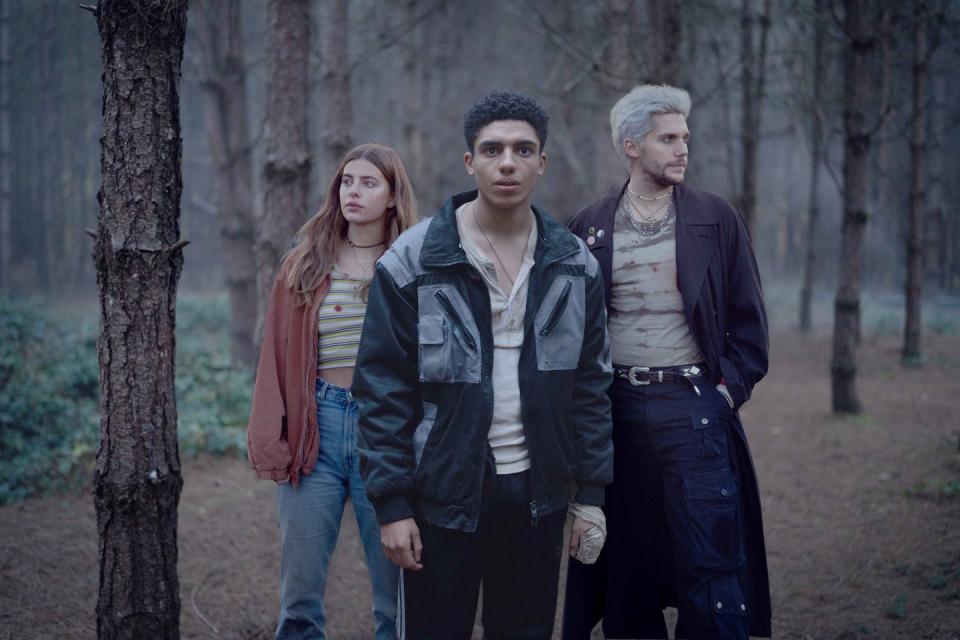Karen Pirie gets right what so many police thrillers get wrong

Karen Pirie spoilers follow.
We've seen it a million times before – a detective (often male) with furrowed brow, pores over graphic crime-scene photos of a dead woman's (often naked) body. Or the dogged police officer visits the crime lab, pulls back the protective sheet or unzips the body bag to reveal – yes, you guessed it – a nude dead woman, her body scarred and bruised.
And if the TV series is really gritty, our investigative hero may even stand grimly by as the female corpse is delicately, slowly, opened up by the medical examiner to find the cause of death.
Welcome to Dead Girl TV, where women die in our living rooms on a regular basis.

Alice Monroe in The Fall, Laura Palmer in Twin Peaks, Dora Lange in True Detective, Molly Andrews in Endeavour... even the numerous women in shows like Law & Order and Mindhunter are prime examples of the Dead Girl trope.
The female murder victims are seen as little more than powerless objects, and if they are given a personality at all, it is usually of a 'bad girl' who stayed out late or had more than one boyfriend so probably 'deserved' to end up lying on a mortuary slab.
It's therefore refreshing that ITV's tense new crime series, Karen Pirie, finally subverts this trope and handles a woman's murder in a different way to most TV dramas.
Based on the character created by crime novelist Val McDermid and skilfully adapted for the screen by Emer Kenny, Karen Pirie begins like so many crime thrillers by showing us the victim – Rosie Duff – but in this drama she's not a corpse, she's very much alive.
It's 1996 and Rosie (Anna Russell-Martin) is a barmaid in St Andrews, and we see her vibrant, laughing and joking in the opening scenes of the series.
We don't see her murder after she leaves the bar (and it is never shown later in the series, either), and when three male students find her body in the grounds of St Andrews' cathedral, we only see her clothed body from a distance and a glimpse of her face. The only blood briefly shown is on her clothes and the clothes and hands of the men who discovered her (and perhaps killed her? No spoilers here).

The story then jumps ahead 25 years to the present day, as detective Karen Pirie (Lauren Lyle) is assigned to revisit the cold case of Rosie's murder after a true-crime podcast brings the crime back into the public's mind.
Thankfully, the passing of time means there is no body to linger on in an autopsy, and screenwriter Kenny has also made a conscious effort to focus on Rosie the person rather than fill the screen with crime-scene photos of her corpse (the main photo featured in the investigation is of Rosie when she was still alive).
"I tried to minimise the gore of what happens to her, because I don't think it's about that, you don't want to be exploitative or sensationalist," Kenny says. "I also really minimised what you see of what happens to Rosie. I tried to put the victim's experience in the mouths of the actresses and it felt like that was a better way of approaching this kind of story. I was really concerned to get it right."
Throughout the three episodes as Karen learns more about the night Rosie died, the action flashes back to Rosie so we always see her as a flesh-and-blood person, not just another murder victim.

"There's been a lot of criticism of crime shows over the years and the way they deal with female victims, and a lot of people just don't want to watch women being raped and killed on TV anymore," continues Kenny. "I completely understand that, but as I was writing the series, Sarah Everard went missing and then throughout the year, several other tragic cases followed.
"I felt this bubbling anger in my chest at all times when I was writing, because the subject matter in the book covered a really similar area – Rosie, the victim in the book, is just trying to get home and she doesn't make it. I felt angry and I could see how angry others felt too, so it was important that I approached this story properly and that I gave Rosie a voice."
Kenny also succeeds in giving more real-life female victims of crime a voice by using the true crime podcast as an effective narrative tool early on in the first episode.
A clip from Bel Richmond's (Sex Education's Rakhee Thakrar) podcast explains why Rosie's story should be told, as she informs her listeners: "Nine out of 10 murders are committed by men. Two women a week are killed by a current or ex partner, one in three women will experience domestic abuse in their lifetime.

"Every woman I know has accepted it as a fact that she should call a friend when she walks home at night… that she should have her keys ready between her knuckles. When are we going to admit that it's not enough?"
That monologue also explains to the Karen Pirie audience why – whether we like it or not – women will continue to be the victims of murder on screen, simply because so many women are victims of crime in real life.
Here's hoping when the next crime drama comes along, if a women is the victim, she is portrayed as a person and not an object or an anonymous Dead Girl.
After all, as the gripping Karen Pirie shows, giving your victim a voice and a personality and a life on screen makes their death far more powerful than a hundred graphic corpse photos or a nude dead body ever could.
Karen Pirie is available to watch as a box set now on ITV Player.
You Might Also Like

 Yahoo News
Yahoo News 
